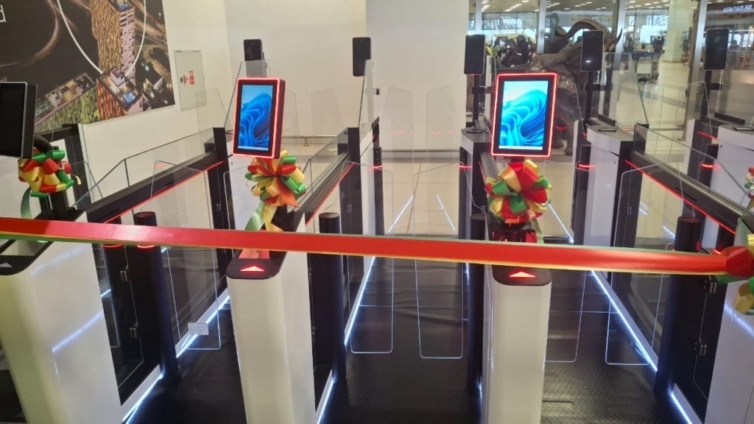The Ghana Immigration Service (GIS) has refuted claims that taxpayers spent $240 million on the recently installed E-Gate technology at Kotoka International Airport (KIA).
These allegations come after the government was accused of corruption for using a private company to activate the system.
The minority in parliament has been outspoken in its objections; in an interview on Wednesday, December 18, Minority Chief Whip Governs Kwame Agbodza called the arrangement a blatant instance of “create, loot, and share.”
Agbodza questioned why the E-Gate system was purportedly costing $147 million, pointing out that the entire airport was built for $250 million.
The GIS clarified that the widely shared $240 million cost estimate for the E-Gate system is erroneous in a statement issued on Thursday, December 19, and urged the public to ignore such assertions. The agency underlined its dedication to accountability and openness in project implementation.
“The Ghana Immigration Service is implementing a new integrated border management system known as the ‘Immigration 360’. The system seeks to fully automate passenger processing and data management at all the forty-eight (48) approved entry/exit points to Ghana and other operational commands. The new system seeks to address challenges with sovereignty, interoperability, and other inadequacies associated with the existing systems installed at twelve (12) approved borders.
“The total cost of the new ‘Immigration 360’ border management system is $94.6 million (i.e., $94,664,374.57). As part of Phase One (1) of the project, the GIS is installing border management systems, including an e-Gate component at the KIA, which is geared at enhancing smooth passenger clearance and processing. This whole component for the KIA, comprising the immigration control systems and the e-gates, cost $5.5 million (i.e., $5,548,860.89).
“The e-Gate system alone (comprising 15 units of e-Gates with accessories), which forms part of the border management system being installed at KIA, costs $1.7 million (i.e., $1,760,479.80),” it stated.
According to the GIS, the $240 million mentioned in the widely shared social media piece relates to the project’s total cost, which includes the $94,664,374.57 initial implementation cost.
“The $240 million includes two (2) periodic wholesale upgrades of the critical components of the system and the cost of maintenance and licenses over the 10-year cycle of the project. The first upgrade type is in three (3) replacement cycles of key components of the system. The second upgrade type is two (2) 5-year upgrade cycles within ten (10) years to replace major components of the technical infrastructure. This is to ensure a refresh of the system at all times and to ensure the handback of a brand-new system at the end of the ten-year period.
“After accounting for VAT and other taxes, the total comes to $274 million, which includes maintenance and hands-on support services over a ten-year period to guarantee the system is operational around-the-clock. It is worth noting that the Immigration 360 provides the benefits of integrating seamlessly with local databases: Ghana’s National Identification System (NIS), Driver and Vehicle Licensing Authority (DVLA), National Stop/Watch List, and international systems.
“INTERPOL’s Global Stop/Watch List, ICAO’s Public Key Directory (PKD), Advanced Passenger Information (API), Passenger Name Record (PNR), Personal Identification Secure Comparison and Evaluation System (PISCES), which facilitate travel, trade and security,” GIS stated.
GIS further emphasized that the technology, created by a private, local Ghanaian firm called Margins ID Systems Application Ltd, provided the ability to link the several licenses and visas that the GIS issues with the national border control procedures.
“It is important to note that Margins ID Systems Application Ltd (MIDSA) is pre-financing the implementation cost of $94,664,374.57 and will be repaid from revenue that will accrue from the use of the system,” it added.






